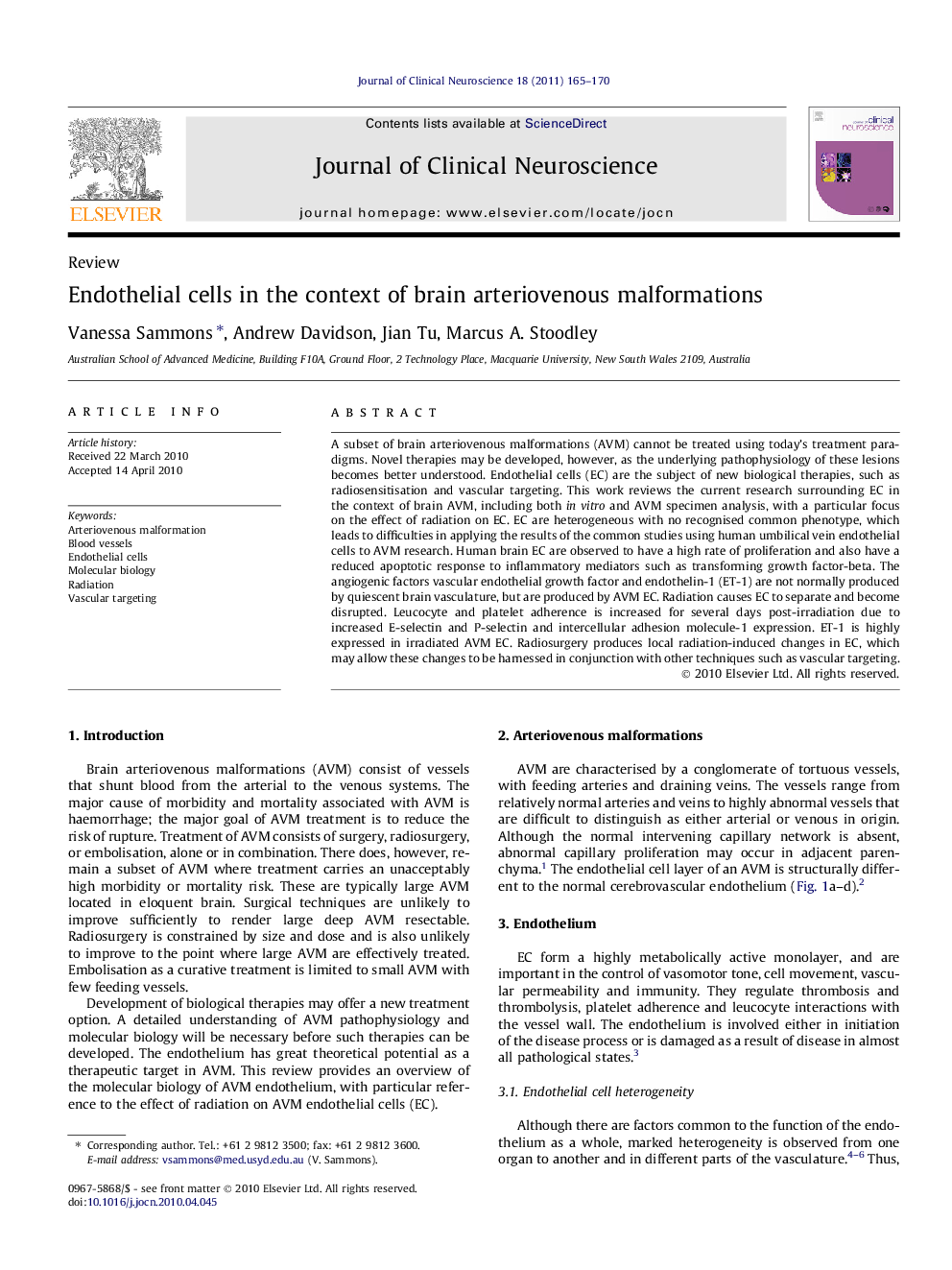| Article ID | Journal | Published Year | Pages | File Type |
|---|---|---|---|---|
| 3062044 | Journal of Clinical Neuroscience | 2011 | 6 Pages |
A subset of brain arteriovenous malformations (AVM) cannot be treated using today’s treatment paradigms. Novel therapies may be developed, however, as the underlying pathophysiology of these lesions becomes better understood. Endothelial cells (EC) are the subject of new biological therapies, such as radiosensitisation and vascular targeting. This work reviews the current research surrounding EC in the context of brain AVM, including both in vitro and AVM specimen analysis, with a particular focus on the effect of radiation on EC. EC are heterogeneous with no recognised common phenotype, which leads to difficulties in applying the results of the common studies using human umbilical vein endothelial cells to AVM research. Human brain EC are observed to have a high rate of proliferation and also have a reduced apoptotic response to inflammatory mediators such as transforming growth factor-beta. The angiogenic factors vascular endothelial growth factor and endothelin-1 (ET-1) are not normally produced by quiescent brain vasculature, but are produced by AVM EC. Radiation causes EC to separate and become disrupted. Leucocyte and platelet adherence is increased for several days post-irradiation due to increased E-selectin and P-selectin and intercellular adhesion molecule-1 expression. ET-1 is highly expressed in irradiated AVM EC. Radiosurgery produces local radiation-induced changes in EC, which may allow these changes to be harnessed in conjunction with other techniques such as vascular targeting.
